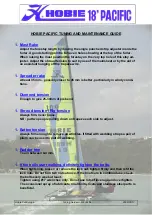Hobie Gateway, Assembly Manual
The Hobie Gateway Assembly Manual is a comprehensive guide that walks you through the step-by-step process of setting up your Hobie Gateway. This indispensable manual is available for free download on our website, ensuring a hassle-free experience. Get your copy of the manual today at manualshive.com.

















